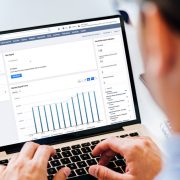In finance, a trading strategy is defined as a fixed plan designed to achieve a profitable return, and this is achieved by going long or short in markets. The main reasons a properly researched trading strategy helps are its verifiability, quantifiability, consistency, and objectivity.
A trading strategy requires several elements to be in place before trading. These include entry price, exit price, and money management rules. Many traders develop unique strategies, which may use different combinations of these elements.
When it comes to forex trading, there are a variety of strategies that traders can use to make a profit. One such strategy is margin trading. Margin trading allows traders to leverage their account balance to trade more significant amounts than they would be able to do with their capital. This leverage can lead to increased profits but also increased risks. This article will look at what margin trading is, how it works, and some of its risks.
What is margin trading?
Margin trading is a type of trading that allows traders to use their account balance as collateral to trade more significant amounts than they would be able to do with their capital, which is done by borrowing money from the broker to trade. The amount traders can borrow will depend on the account balance and the broker’s requirements. The trader will then need to pay back the borrowed amount plus interest when they close their position.
How does margin trading work?
Once a trader wants to open a trading position, they must deposit the required margin first, which is usually a percentage of the total value of the trade. For example, if the margin is 5%, and the trader wants to buy $100,000 worth of currency, they will need to deposit $5,000 into their account. The broker will then lend them the remaining $95,000 needed to complete the trade.
What are the advantages of margin trading?
The advantage of margin trading in the Netherlands is that it allows traders to trade more significant amounts than they would be able to do with their capital, which can lead to increased profits if the trade is booming. However, it also comes with increased risks. If the trade goes against the trader, they may owe the broker more money than they have in their account, and this can lead to a margin call, where the broker will demand that the trader deposit more money into their account or close their position.
What are the risks of margin trading?
The main risk of margin trading is that it can lead to losses that exceed the amount of money in the account. This can happen if the trade goes against the trader, and they cannot compensate for the losses with their capital. If this happens, the broker may issue a margin call, demanding that the trader deposit more money into their account or close their position. If the trader cannot do either, their account may be liquidated, and they may owe the broker money.
Other risks include slippage when the currency’s price moves against you before closing your position, which can lead to further losses. Finally, leverage can work both ways and magnify both profits and losses.
What are other strategies used by traders?
Other popular strategies used by forex traders include day trading, trend following, and position trading. Day trading involves opening and closing positions within the same day, and this can be done manually or using automated software. Trend following is a strategy that involves riding the trends of the market. Position trading is a longer-term strategy that involves holding positions for days, weeks, or even months.
The final word
Margin trading is a type of forex trading that allows traders to use their account balance as collateral to trade more significant amounts than they would be able to do with their capital. When used correctly, margin trading can be a great way to increase your profits. However, it is essential to understand the risks before using this strategy and always use a broker from Saxo Bank.










Comments